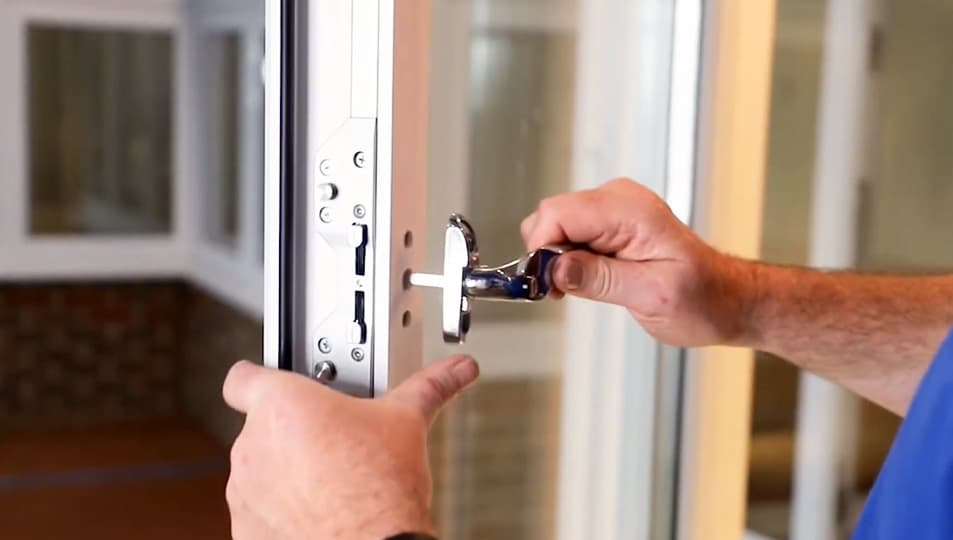20 Things You Should Know About Lock Repair
페이지 정보

본문
 How to Do Your Own Lock Repair
How to Do Your Own Lock Repair If your locks fail, you can try to fix them yourself or hire an expert locksmith. However, the process of fixing locks can be tricky and if you don't follow the correct procedure, it could lead to further damage.
If your locks fail, you can try to fix them yourself or hire an expert locksmith. However, the process of fixing locks can be tricky and if you don't follow the correct procedure, it could lead to further damage.The first step is to make sure the issue isn't caused by dirt or dust. A Graphite-based spray or a silicone-based lubricant can be used to solve this issue.
1. Door Knobs or Handles that are loose
Door knobs and handles could become loose over time, which can result in an unbalanced door handle or knob that is difficult to open. Knobs that are loose in the door are not only annoying but they can also compromise your building's security, so it is important to find and fix the problem quickly. A doorknob that is loose is simple to repair. There are a few different ways to do this, dependent on the lock system your door has. Certain lock systems have easily accessible mounting screws, whereas others use backplates to hide the screws. This method is more complex in the case of a backplate that hides the screws.
The majority of interior doorknobs come with a small screw known as an setscrew located on the inside of the knob, which prevents it from sliding across the spindle. This is a part of the latch assembly. If the knob you have is jiggly it could be due to tiny screws, referred to as a set screw, located on the inside of the doorknob which is stopping it from sliding over the spindle. You can make use of an flashlight to locate the set screw, then tighten it using an Allen wrench. After the screw has been tightened by turning the knob, verify if it feels secure.
If the knob is moving, it could be because the set screw hasn't been properly positioned. To make sure the screw is positioned correctly Look for a small, corresponding button on the spindle. Move the knob over the spindle after pressing the button with the screwdriver with a flat head. When you do this the knob should click, indicating that it is positioned properly on the spindle.
After you've made sure the set screw is properly positioned and tighten it once more to fix the knob or handle in place. This should solve the issue If not then you might require removing the knob and inspect the backplate for missing or loose screws. If this is the case, you'll have to replace the screws before re-securing the knob or handle. If you're not sure about this type of repair, call an expert who specializes in repairing damaged window locks repair.
2. The key won't spin in the lock
There are a number of reasons why your key could stop turning inside the lock. One of the most frequent reasons is that the pins inside the cylinder have begun to wear down and, consequently, they no longer have the proper shape to move the wafers, sliders, or tumblers that allow the key to open the double glazed window lock repair. In this case an easy fix would be spraying the lock with graphite spray or lubricant based on silicone to coat the pins and help them move again.
If the problem is more serious and the key is bent, you may have to have it straightened by a professional. A professional locksmith can employ a special tool to straighten the keys, which is designed with a curved end to fit into the groove in the tip of the key. This kind of tool is not available at hardware stores, but you can find a kit that includes the proper tools online or in an establishment that sells locksmith tools.
Another possibility is that the lock is dirty or affected. Over time, dust may build up in the lock's the cylinder, which may cause the pins and springs to swell up. In this case, you'll be required spray the lock with graphite spray, or a silicone-based lubricant to clean it out and restore the pins to their original positions.
If the key itself is damaged, it could also be a cause for concern. Over time, repeated use can wear down the grooves on a key. This could result in the key not fitting into the cylinder, so it's important to pay attention and make sure that your key fits correctly.
In the winter months locks can freeze which can stop the springs and pins from moving when the key is placed. This can be a frustrating issue, but is usually easily resolved by warming the lock by using hot water and then re-lubricating it. If the lock is damaged beyond repair, or has frozen the lock, it will have to be replaced.
3. The Lock Isn't Turning
If you've ever had locks that don't turn and isn't able to be opened, it can be extremely frustrating. If this happens often it is advisable to think about hiring a locksmith to inspect the Upvc Window Lock Mechanism Replacement to determine whether they can help. Fortunately, this isn't always necessary since there are things that can be easily repaired without the need for professional assistance.
The key will not turn in the upvc window lock replacement if it is damaged. This could happen in the event that you've lost your key, or if it has been broken inside the lock. Instead of trying to get it out of the lock which could cause the broken piece of the key to move further inside the mechanism, which could make the problem much worse, try using needle-nosed pliers to take it out of the lock. You'll want to be careful not to break any of the broken piece using the pliers, or you may damage the lock.
It's also possible that the lock isn't aligned correctly, which can cause the door to not latch correctly. If you have an additional lock key, you can test it to verify that the lock is working properly. If you find that the lock isn't aligned properly by tightening the screws around the strike plate could fix the issue and allow the lock to perform normally.
Another reason your key may not be turning is because there is dust or dirt inside the lock that is blocking it from moving. This problem can be solved by using the lubricant based on silicon or graphite to coat the pins of the lock. This allows them to move up & down as normal. It is recommended to avoid oils-based products, such as WD-40 for instance, as they can cause more blockages in the future.
It's important to note that some keys don't fit in all locks. If yours is one of these, it might be time to purchase a replacement key from an area hardware store, so that it works in the lock.
4. The Cylinder is rotating.
Hairpin vortices may form when a cylinder rotates within a confinement. These vortices can impose significant forces on the rotating cylinder. The forces are proportional to the dimensionless radius x of curvature and the confinement factor. The tube, head and the main body of the cylinder are constructed of aluminium alloy.
If you're able to get your key inside and turn it but the lock isn't turning there could be an issue with the cylinder itself. Rekeying the lock could solve the issue. There are kits specifically designed for this purpose that can be purchased online or in most big box stores.
